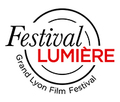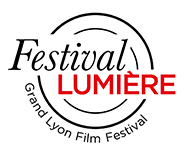“Fashion and cinema are reflections of each other”
Posted on 20.10.2023
Elsa Heizmann, Director of Relations for Fashion and Cinema, explains the unique synergy between the 7th art and Chanel, which has been a loyal partner of the Lumière film festival.
![]()
Can you describe Chanel's special connection with the 2023 Lumière film festival?
In my opinion, the richness of this festival comes from its relationship with creation and creators. As partners of the festival since 2021, we are particularly aware of the programming set up in Lyon, the birthplace of the cinematograph. This year, the festival is paying tribute to Wim Wenders by bestowing on him the Lumière Award 2023. In addition to the recognition this represents for Wim Wenders and lovers of his cinema, we are delighted that Lubna Playoust's film Chambre 999, of which Chanel is a partner, is presented in the Lumière Classics section. As a response to Wim Wenders' Room 666, Lubna Playoust has recreated a set-up similar to that of 1982, interviewing contemporary filmmakers about the future of cinema.
Then, of course, there are other themes that are close to our hearts, which is why we have renewed our support for screenings and meetings with guests, notably with the cycle "A Permanent history of women filmmakers", which is devoted to director Ana Mariscal this year, an example of determination and commitment.
Finally, in terms of classic films, we also have the pleasure of seeing landmark works or works by filmmakers close to Gabrielle Chanel in the lineup, such as Bellissima by Luchino Visconti, La Bête humaine by Jean Renoir, in which the actress Simone Simon wears a Chanel suit, or the film High Heels by Pedro Almodóvar, for which Chanel made the suits in acid colours, with actress Marisa Paredes a special guest of the festival.
How does the relationship between Chanel and cinema relate to the present day?
The relationship between the 7th art and the House of Chanel is historic: Gabrielle Chanel took an interest in the world of fashion at the beginning of the 20th century. She dressed great actresses both on and off the silver screen and worked with renowned filmmakers such as Robert Bresson and Alain Resnais. Since then, the House has continued this dialogue with the greatest directors, notably when it commissioned films for Chanel N°5. Virginie Viard is now extending these connections, founded on a deep love of cinema and those who create it, by supporting them in their projects. It can involve costume design, for example for Maïwenn's Jeanne du Barry, Sofia Coppola's Priscilla, or Greta Gerwig's movie phenomenon, Barbie.
We're convinced that, in a way, fashion and cinema reflect and inspire each other.
For Chanel, how is the relationship established between the filmmakers and the House's creations? Is it a mutual exchange?
The team in charge of cinema relations supports and advises actresses, filmmakers and other talents close to the Maison in their artistic projects. This approach, which is quite unique, is part of the continuity of the links we have forged with these artists over the years. Chanel and the cinema is a relationship that is a century old, initiated by its founder, which we continue to nurture through our support for film restoration and the transmission of our cinematographic heritage to future generations. This can also take the form of assistance with filming, through costumes, the loan of Haute Joaillerie pieces for example, or support during events such as the Lumière film festival, premieres and appearances on red carpets around the world. Each of the directors, actresses, friends and ambassadors whose daily lives, film shoots and passions we share bring Chanel fashion to life in their own way. Above all, I believe that we are at the service of the cinema, of creators who seek to implement an original project, the fruit of their vision or experience. These links with the 7th art allow us to bring to life a certain idea of Chanel's allure, in other words, to share our imagination.
Interviewed by A. F.

